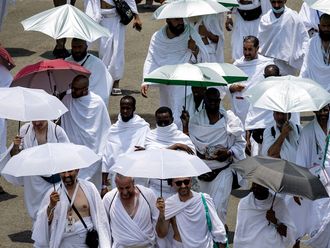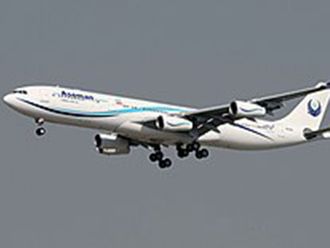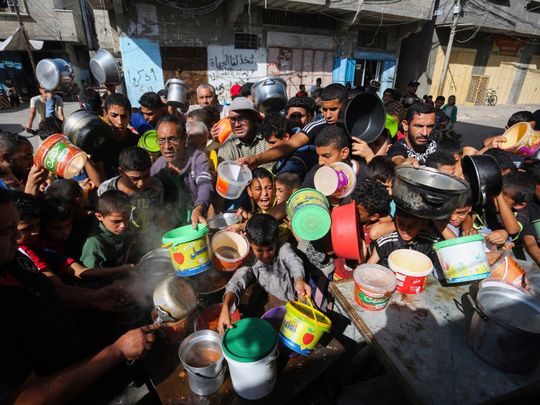
Jerusalem: The situation in north Gaza is deteriorating as Israel tightens its hold on Gaza City, where the Israel Defence Forces says the bulk of Hamas’s infrastructure lies.
Many civilians are walking south, holding white flags in the air, worried they may not survive if they stay in the north.
Weeks of heavy Israeli bombardments after Hamas’s deadly October 7 incursion into Israel, followed by Israel’s ground invasion of Gaza, have reduced large parts of north Gaza to rubble.
Some families have continued to shelter at home or with relatives, but heavy airstrikes in once densely populated areas including Beit Hanoun, Jabalya and Gaza City are forcing many residents to leave.
Where people are seeking shelter
The United Nations says more than 1.5 million Palestinians have been displaced since October 7. Two-thirds of Gaza’s internally displaced people have already relocated south of Israel’s designated evacuation zone, but others are still looking for safe shelter in the north.
Over 121,000 people have relocated to shelters in north Gaza run by the UN agency for Palestinian refugees, or UNRWA, even though food distribution and medical services have completely stopped. On Saturday, Israeli strikes hit an UNRWA school, killing at least 15 people, according to the Gaza Health Ministry.
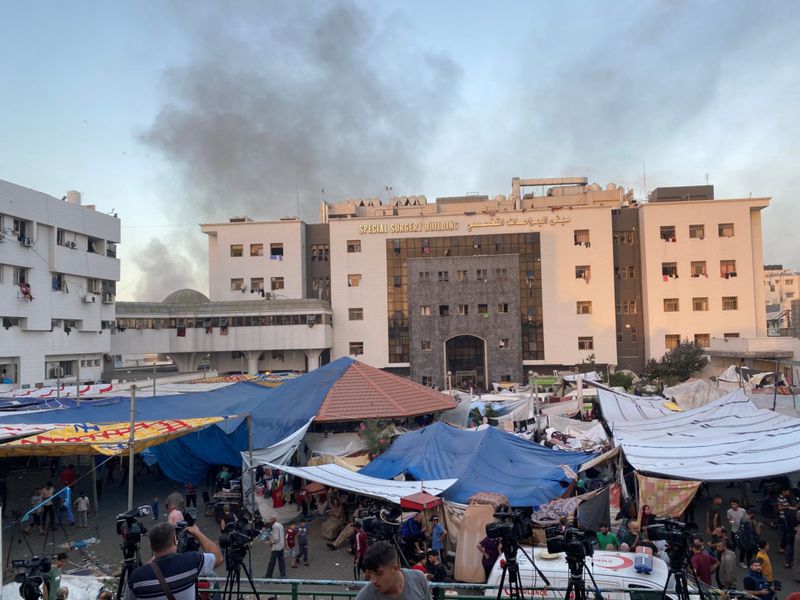
Approximately 80,000 people have crowded into Gaza City’s two largest hospitals, according to the Health Ministry.
“The corridors are full of injured people. The ER rooms are beyond full,” said Marwan Abusada, chief of surgery at Gaza City’s al-Shifa Hospital, in a statement to the press. “There is now a high chance of pandemics spreading between patients and displaced people who are no longer just outside.”
As the airstrikes continue, Fadi Abu Shammala said his neighbors in Gaza City are sheltering in the parking garage, one level below ground.
Securing basic needs
North Gaza used to have 38 operating bakeries. Ten have been disabled by Israeli airstrikes, and the rest don’t have enough water, flour or fuel to stay open.
“Israel has cut the basic needs required to live,” said Rawan Abu Hamda, a 41-year-old mother living in Gaza City.
“There are no bakeries selling bread in north Gaza. The supermarket shelves are empty and the vegetables are gone.”
Although Rawan has saved enough water to last her family five more days, most of her neighbors are not as lucky.
“People are walking on the road looking for any kind of water supply,” Abu Hamda said. “They can purchase it from the black market for very high prices.” Most families can’t afford any surplus to bathe, but even for families that can afford it, the water is dirty, she said.
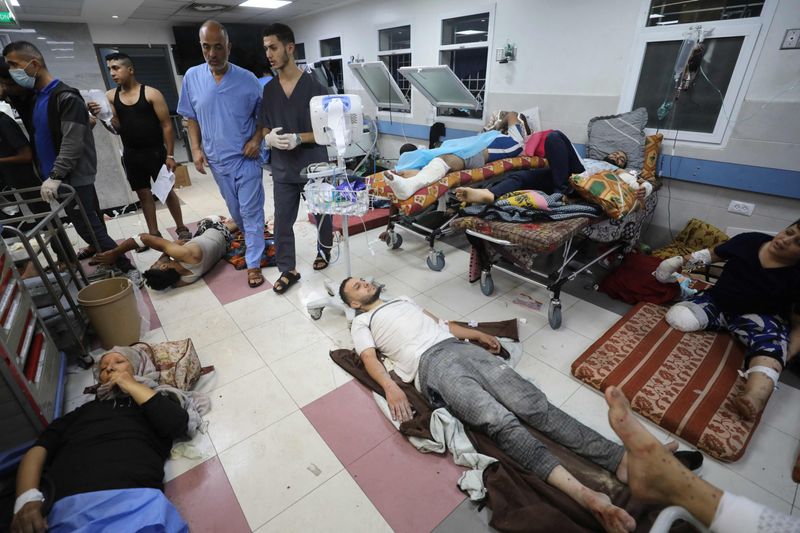
Hospitals are facing a similar fate. Over 90 per cent of the primary care facilities in north Gaza have shut down, according to the Health Ministry, and seven regional hospitals are now closed. Staffing shortages are expected to increase as more families choose to move south.
Fuel has not entered Gaza since October 9, when Israeli Defence Minister Yoav Gallant announced a complete blockade of the territory.
It is now so limited that Gaza City’s largest hospitals are rationing care. Israeli airstrikes damaged the solar panels powering Al Shifa’s main hospital ward on November 6, reducing the hospital’s supply to a secondary generator now reserved for only critical oxygen and dialysis care. The Palestine Red Crescent has reported fuel shortages so severe that al-Quds Hospital has closed its surgery ward.
“We need fuel to run the facilities that we support,” said UNRWA spokesperson Juliette Touma. “It is very safe to say that fuel is being used as a weapon of war.”
Safe passage to the south
The Israeli military has instructed civilians to leave north Gaza on a one-way civilian corridor. But many families don’t trust that they will be safe.
“My cousin was killed in a shelling on the road between Gaza City and Rafah last week,” Abu Hamda said. “I’m afraid to walk this long way with my daughters.”
Nearly half of north Gaza’s 1.19 million residents have already risked the journey south. Displaced families have poured into hospital courtyards, private homes and UNRWA centres that are hosting nearly four times their intended capacity across south Gaza, making food and water shortages even more acute. At one center in Khan Younis, over 600 people are sharing one toilet, and on average in UNRWA shelters, there are 700 people for every shower, according to the agency.
“People have made impossible choices,” said Human Rights Watch Programme Director Sari Bashi. “Warning people to leave when there’s no safe place to go is not effective. And civilians who chose to stay are not fair game.”



